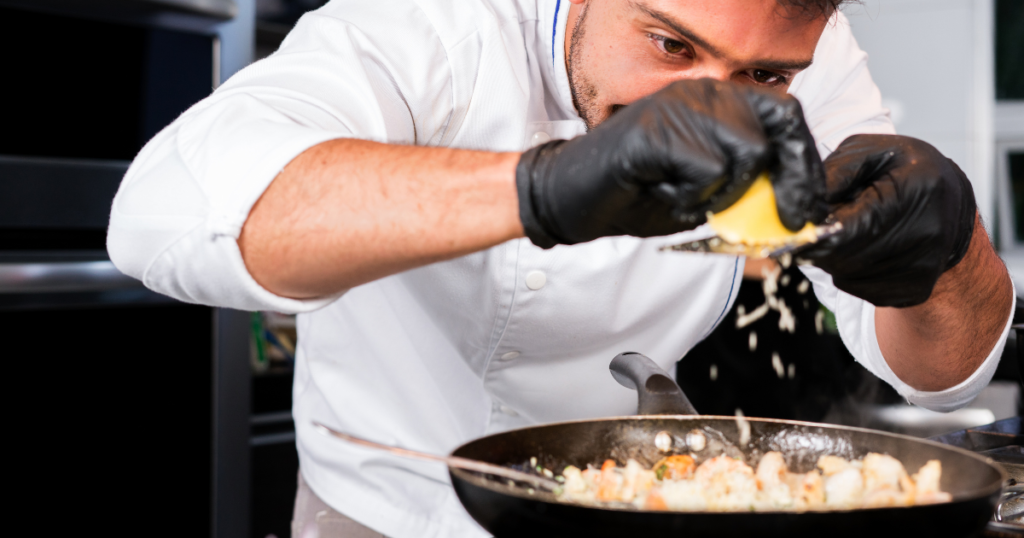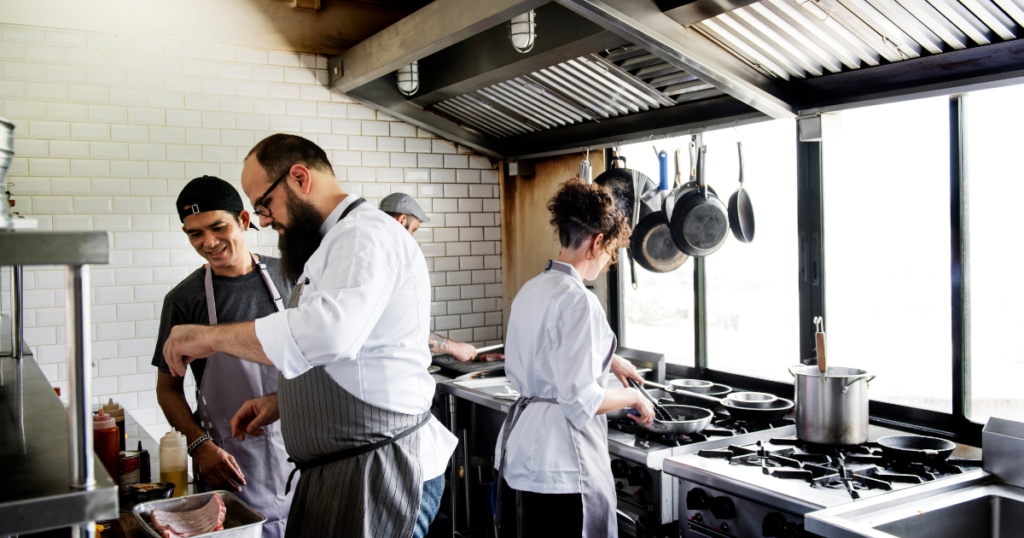In professional kitchens, the tools you choose can define the quality of your culinary creations. Among these, pans and woks are indispensable, offering versatility and precision. But have you ever wondered why some dishes require a skillet while others call for a wok? How does the choice of cookware influence the flavour and texture of your food? Let’s explore the different types of pans and woks, their uses, and their vital role in food service design.
The Sizzle of Skillets: Mastering Frying Pans

Skillets, or frying pans, are a kitchen staple, ideal for frying, searing, and browning. But not all skillets are the same. The material—whether cast iron, stainless steel, or non-stick can greatly affect how food cooks and tastes.
Cast Iron Skillets: The Flavor Enhancers
Cast iron skillets are renowned for their ability to retain heat, ensuring even cooking. Over time, they develop a natural non-stick surface, making them perfect for searing meats and sautéing vegetables. However, cast iron requires regular maintenance, like seasoning, to prevent rust and maintain its non-stick properties. Is the flavour enhancement worth the extra care? Many chefs would argue it is.
Stainless Steel Skillets: The Professional’s Choice

Stainless steel skillets are a favourite in professional kitchens due to their durability and versatility. They can handle high heat and acidic ingredients without warping or reacting, making them ideal for browning meats and creating pan sauces. But why is stainless steel so prevalent in a restaurant? Its ability to deliver consistent results in high-pressure environments is unmatched.
Non-Stick Skillets: Convenience in the Kitchen
Non-stick skillets have revolutionized cooking by making it easier to prepare delicate foods like eggs and fish. Their smooth surface ensures easy food release and quick clean-up. However, non-stick pans can’t handle high heat as well as other materials, and their coating may degrade over time. In a restaurant, non-stick pans are often reserved for specific tasks, ensuring they are used where their unique properties shine.
The Versatility of Woks: Beyond Stir-Frying

Woks are often associated with Asian cuisine, but their uses extend far beyond stir-frying. With their high, sloping sides and wide base, works are designed for quick, high-heat cooking. But have you considered how a wok’s shape influences its versatility? The unique design allows for a large cooking surface at the bottom, while ingredients pushed up the sides stay warm without overcooking.
Carbon Steel Woks: The Traditional Tool
Carbon steel woks are the go-to choice for many chefs due to their quick and even heating. Like cast iron, they require seasoning, which develops a non-stick surface over time. The patina that forms adds a distinctive flavour to dishes, making carbon steel woks a favourite in many kitchens. But why do chefs prefer carbon steel over other materials? The answer lies in control—carbon steel allows for rapid temperature adjustments, essential for achieving the perfect stir-fry.
Non-Stick Woks: Modern Convenience
Non-stick woks offer the ease of use and cleaning that non-stick cookware is known for, but they lack the high-heat capabilities of carbon steel. In a busy kitchen, where efficiency is key, non-stick woks can be a valuable asset for specific dishes. However, they may not provide the same depth of flavour as their traditional counterparts. So, when should you opt for a non-stick wok? It depends on the dish and the cooking method, balancing convenience with culinary authenticity.
Electric Woks: Innovation in Cooking
Electric woks bring a modern twist to traditional cooking, offering consistent temperature control and portability. While they may not achieve the high heat of gas-fired woks, they cater to contemporary kitchens where gas isn’t practical. Electric woks represent a shift in food service design, adapting to the needs of today’s kitchens. But can they truly replicate the experience of traditional woks? For some, the convenience and consistency outweigh the desire for high-heat cooking.
The Impact of Pans and Woks on Food Service Design

Choosing the right pans and woks isn’t just about cooking; it’s about shaping the entire commercial kitchen design. The correct tools can streamline operations, enhance flavours, and ensure consistency across dishes. Whether you’re setting up a new kitchen or optimizing an existing one, understanding the strengths and limitations of different types of pans and woks is crucial.
How do these choices impact the efficiency and success of your food service establishment? It’s all about matching the right tools to the right tasks. For instance, a high-end restaurant might prioritize cast iron and carbon steel for their flavour-enhancing properties, while a fast-casual eatery might opt for non-stick and stainless steel for their speed and ease of use.
Conclusion: Crafting Culinary Excellence with the Right Tools
The selection of pans and woks in your kitchen goes beyond functionality it’s a critical element of your overall kitchen design. The right cookware can elevate your dishes, improve efficiency, and contribute to a seamless culinary experience.
Are you looking to optimize your kitchen’s design with the perfect selection of tools? At HPG Consulting, we specialize in food service design that aligns with your culinary vision and operational needs. Let us help you create a kitchen that not only meets your requirements but exceeds your expectations. Contact us today to elevate your food service design to the next level.